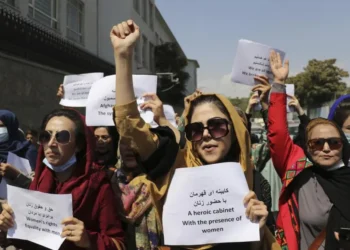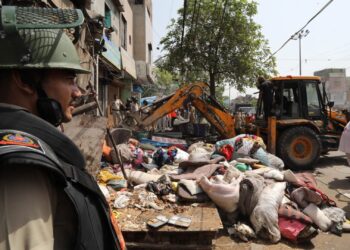Human Lives Human Rights: The New York Police Department (NYPD) has been ordered to disclose thousands of records of how the force procured and used facial recognition technology against Black Lives Matter (BLM) protesters.
Rights groups say that the New Yorkers demanding racial justice have a right to know the full details of NYPD’s use of facial recognition technology during the BLM protests.
This ruling recognizes that the NYPD broke the law in withholding this information and is a significant step in holding the NYPD accountable for its use of discriminatory surveillance.
A ban on facial recognition for mass surveillance is a much-needed first step towards dismantling racist policing in New York. Everyone has a right to peacefully protest without fear of surveillance.
New York Supreme Court Judge, Justice Laurence Love, ordered the NYPD to share 2700 of documents and emails between March 1, 2020, to September 1, 2020, related to procurement and usage of facial recognition surveillance at the BLM protests.
“It was wrong for the NYPD to surveil BLM protesters, and it was wrong to hide the evidence,” said Surveillance Technology Oversight Project Executive Director Albert Fox Cahn.
“This department systematically hides the ways it watches us, but today the surveillance cover up just won’t work.
This ruling was crystal clear: the NYPD broke the law when it hid its records. When the police operate in the shadows and violate oversight laws, it’s not only a threat to public safety, but to democracy.
I hope that Mayor Adams’ NYPD quickly complies with the order. New Yorkers deserve to know how political dissent is policed in this city. More importantly, these records can help us prevent more abuses in the future.”
It is worth to note that facial recognition exacerbates discriminatory policing and prevents the free and safe exercise of peaceful assembly, by acting as a tool of mass surveillance.
Black and minority communities are at far greater risk of being targeted.
The analysis, part of the global Ban The Scan campaign, showed how the NYPD’s vast surveillance operation particularly affects people already targeted for stop-and-frisk across all five boroughs of New York City.
In the Bronx, Brooklyn and Queens, the research also shows that the higher the proportion of non-white residents, the higher the concentration of facial recognition compatible CCTV cameras.


















